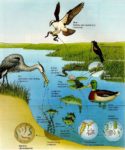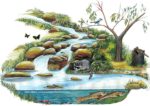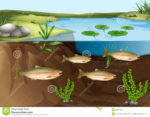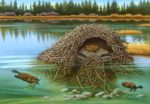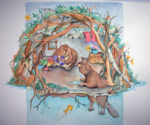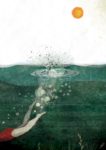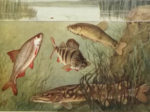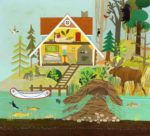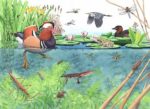Rejoice not when thine enemy falleth,
and let not thine heart be glad when he stumbleth:
Proverbs 24:17
Schadenfreude is a german word that has no english equivalent. It is a combination of two words “Schaden” meaning harm or damage, and freunde meaning friend. The kindest interpretation of the term ascribes it is the relief you feel when someone else gets blamed instead of you. Although there are plenty of less kind translations, we’ll go with that for now.
‘Cute’ otter leaps onto kayak, lunges at Florida woman’s face
 Sue Spector was kayaking with her husband down the pristine Braden River in western Florida when she spotted an otter. Spector, 77, from Sarasota, turned around in her boat early Sunday morning and, catching a glimpse of the small river dweller, thought to herself, “Oh, this is a cute otter,” she told the Tampa Bay Times.
Sue Spector was kayaking with her husband down the pristine Braden River in western Florida when she spotted an otter. Spector, 77, from Sarasota, turned around in her boat early Sunday morning and, catching a glimpse of the small river dweller, thought to herself, “Oh, this is a cute otter,” she told the Tampa Bay Times.
The animal, usually known for its curiosity and playful demeanor, leaped onto the kayak and lunged at Spector.
“Then we had this little tug of war,” she told the Tampa Bay Times. “I tried to get him off of my kayak and I screamed extremely loud so I could try and scare him off but that didn’t work. It took some time, but I fought with him, my husband jumped in and other people came by to help.”
 The kayak rolled.
The kayak rolled.
The couple were thrown into the water – half-swimming, half-flailing their paddles to try to fend off the animal.
“I took my paddle and I tried to get him off of me and he wouldn’t let go and I kept screaming, I kept beating him with a paddle,” Spector told Fox affiliate WTVT. “When you’re [in the middle of] it you don’t have a lot of thought except you hope you survive.”
Spector and her husband climbed on their guide’s kayak and began paddling “as fast as we could,” she told the Times. “The otter followed us but didn’t attack again.”
Wow, I remember reading an account like this years ago from Shasta. Of course otters can get rabies just like any other mammal. And that must have been terrifying for the woman involved. But I can’t help feeling just a little squeak of joy that for once it wasn’t a BEAVER behaving badly.
You just watch though, I’m sure this story won’t hang around the news cycle like the murderous Belarus beaver.
Nicole Duplaix, who chairs the International Union for Conservation of Nature’s Otter Specialist Group, said otters are known for being friendly animals but, like most other creatures, keep their distance from humans.
She said that otter attacks involving humans are “extremely rare” but that when they do occur, there is usually a reason.
“An unprovoked attack is very un-otter-like, unless there’s a cause you can’t see,” Duplaix, who teaches conservation biology at Oregon State University, said Thursday in a phone interview with The Washington Post.
She said that in instances in which otters have attacked, people had gotten too close to mothers with cubs or to their dens.
That’s right. Otters never attack unprovoked, They’re friendly animals. FRIENDLY all the scientists say so. I mean, after all, they’re so CUTE!
Unless you’re a fish. Or a baby duck. Or a beaver kit.
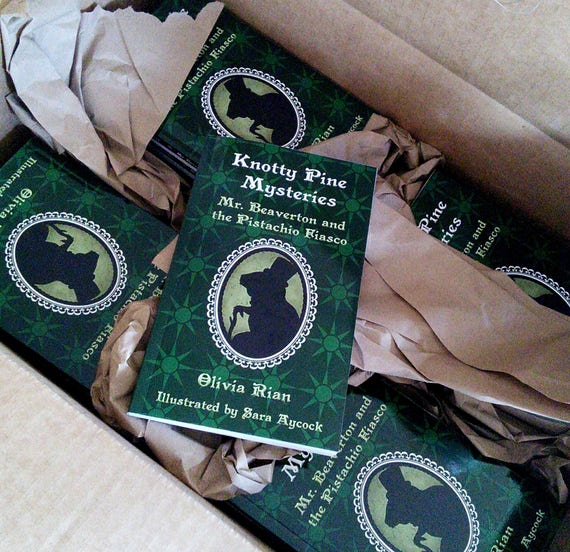
We received a very generous donation from our good friend Sara Aycock yesterday. Sara took time out from publishing her SECOND mystery to donate some more wonderful victorian animals illustrations. They were so popular last year that I can’t wait to see the excitement the bring this year. Sara is an enormously talented mother who uses precious hours while her children sleep to create an entire wonder-world. In fact, her paintings were so intriguing they inspired her sister-in-law to co author an entire mystery series about them!

Of course I had to write Sara initially after I saw this painting of Mr. Beaverton, the detective in the mystery story. About her art she says
“Most of my paintings start with a finger painted background. From there, I see where the painting takes me. Some of my art is pre-planned while other pieces evolve in the process. I love to see what comes about in the process, it’s always a surprise.”
I originally hoped Sara would share a single print. I had no idea that she’d provide a lovingly framed collection of them! These delightful portraits look so appropriate in my victorian home that I told Sara I was tempted to take down all the ancestor pictures in the hallway and replace them with the characters of Knotty pine! 
You can visit Sara’s shop here and enjoy free shipping while her good nature lasts! She just finished painting these new bear characters and said they might well be her favorites. I can certainly understand why! Do yourself a favor and go buy the book too!





 The National Oceanic and Atmospheric Administration ranks winter-run Chinook as one of eight marine species most at risk of extinction.
The National Oceanic and Atmospheric Administration ranks winter-run Chinook as one of eight marine species most at risk of extinction.


 Sometimes news stories just make me jealous. So many people doing so many smart things to benefit beavers because they realize the good things that beavers bring – it just makes me wish and wish that California had the same qualities of smart stewardship. At least they put it in the paper so everyone can learn from it, That’s something, right?
Sometimes news stories just make me jealous. So many people doing so many smart things to benefit beavers because they realize the good things that beavers bring – it just makes me wish and wish that California had the same qualities of smart stewardship. At least they put it in the paper so everyone can learn from it, That’s something, right? SEASIDE — Thompson Creek and Stanley Marsh Habitat Reserve in Seaside is one of the North Coast Land Conservancy’s most visible success stories, with coho salmon migrating up Thompson Creek to spawn every winter and beavers returning to create more salmon habitat.
SEASIDE — Thompson Creek and Stanley Marsh Habitat Reserve in Seaside is one of the North Coast Land Conservancy’s most visible success stories, with coho salmon migrating up Thompson Creek to spawn every winter and beavers returning to create more salmon habitat.

 It’s actually a nice way to look for exactly what you want and not be bothered by all those WORDS folk like me clutter the internet with. It’s how I’ve found some really great beaver images over the years, and even how I find artists to approach for a donation to the silent auction.
It’s actually a nice way to look for exactly what you want and not be bothered by all those WORDS folk like me clutter the internet with. It’s how I’ve found some really great beaver images over the years, and even how I find artists to approach for a donation to the silent auction.
 Lately I’ve been looking especially for images that show an “over/under” look at a beaver pond, to help our artists get ideas and to work on the kids activity for our festival. Nothing is really perfectly beaver-centric of course, which I guess is why the publisher contacted me about Amy’s image. But this is very nice.
Lately I’ve been looking especially for images that show an “over/under” look at a beaver pond, to help our artists get ideas and to work on the kids activity for our festival. Nothing is really perfectly beaver-centric of course, which I guess is why the publisher contacted me about Amy’s image. But this is very nice.
